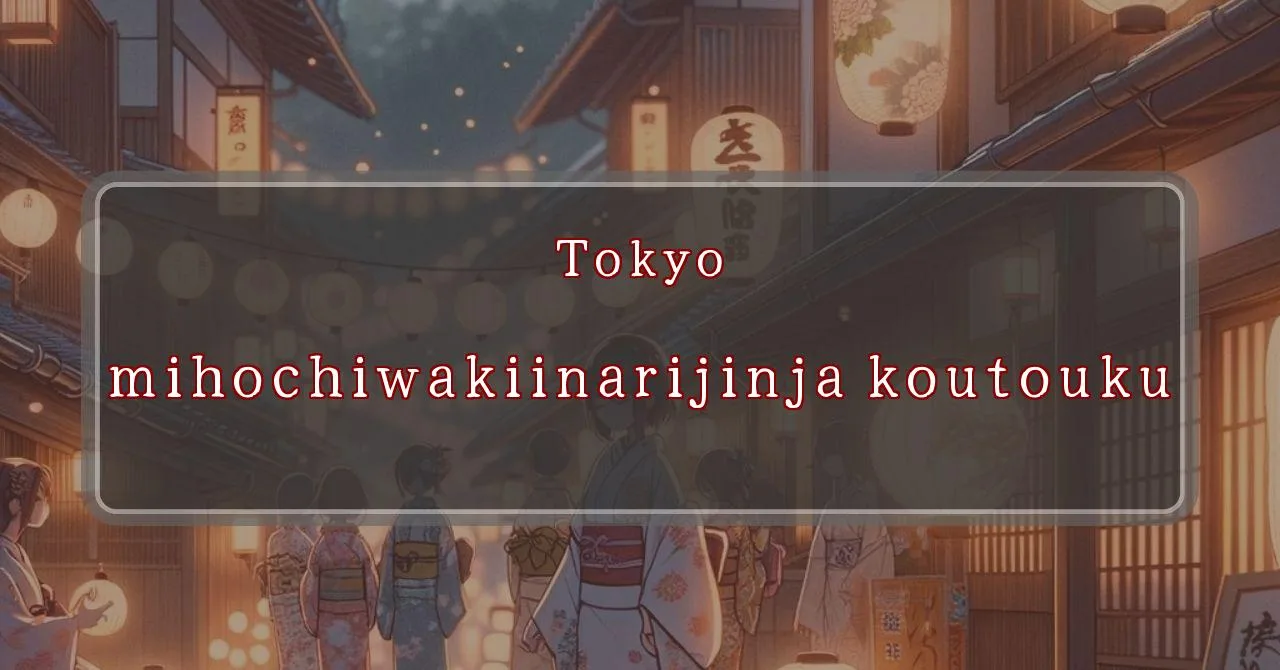Glowing foxes and divine processions: A Shinto spectacle
Basic Information
M穂道別稲荷神社 is a Shinto shrine located in the Kiyosumi district of Koto Ward, Tokyo, Station on the Toei Oedo Line or Hanzomon Line, or an 8-minute walk from Morishita Station on the Toei Shinjuku Line.
Main Events and Attractions of the Festival
The main event a parade of portable shrines. The Mikoshi are carried through the streets of the Kiyosumi district, accompanied by music and dancing. The parade is a lively and colorful spectacle that attracts many visitors.
Mikoshi Togyo (Portable Shrine Parade)
Overview: A lively parade of portable shrines through the streets of Kiyosumi
- Features: Elaborately decorated Mikoshi, traditional music, and dancing
- Highlights: The parade passes through the main streets of Kiyosumi, offering a chance to witness this vibrant tradition up close
Shishimai (Lion Dance)
Overview: A traditional lion dance performed by local children
- Features: Colorful lion costumes, energetic dancing, and lively music
- Highlights: The Shishimai is believed to bring good luck and ward off evil spirits, making it a popular attraction among visitors
Yatai (Food Stalls)
Overview: A variety of food stalls offering traditional Japanese festival fare
- Features: Yakisoba (fried noodles), takoyaki (octopus balls), cotton candy, and other popular festival foods
- Highlights: A chance to sample a variety of delicious Japanese street food in one place
Blessings and Deities
M穂道別稲荷神社 is dedicated to Ukanomitama no Mikoto, the deity of food, agriculture, and industry. The shrine is believed to bring blessings of good harvest, prosperity, and success in business.
Origin and History
The origins of M穂道別稲荷神社 are unclear, but it is believed to have been founded during the Keichō era (1596-1615). The shrine was originally located further east, but it was moved to its current location in 1715 due to an epidemic.
Tips and Notes for Visitors
- The shrine is open daily from 9:00 AM to 5:00 PM.
- Admission is free.
- The shrine is a popular spot for weddings and other ceremonies, so it is best to avoid visiting during these times.
- There is a small parking lot available for visitors.
Parking Information
There is a small parking lot available for visitors to M穂道別稲荷神社. The parking lot is located next to the shrine and can accommodate up to 10 cars. Parking is free of charge.
Popular Stalls and Food Carts in Recent Years
| Type of Stall | Description |
|---|---|
| Takoyaki | A staple at Japanese festivals. Characterized by a crispy outside and a creamy inside. |
| Jaga Butter | A simple yet popular snack of hot potatoes lavishly topped with melted butter. |
| Baby Castella | Small castella cakes, sweet and fluffy treats enjoyed by children and adults alike. |
| Grilled Ayu with Salt | Fresh ayu fish grilled whole with salt, a savory taste of Japanese summer. |
| Shaapin | A unique gourmet item influenced by foreign cuisine, with a chewy skin wrapping the filling. |
| Okonomiyaki | A Japanese grilled dish where you often choose your own ingredients for a personalized flavor. |
| Cotton Candy | A fluffy, sweet snack that’s extremely popular with children. |
| Chocolate Banana | A banana coated in chocolate, a fun and visually appealing dessert. |
| Kushiyaki | Various types of ingredients skewered and grilled, an easy-to-enjoy snack. |
| Yakisoba | Fried noodles mixed with a special sauce, a fast food favorite in Japan. |



